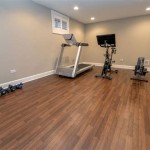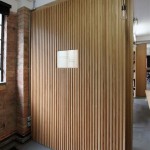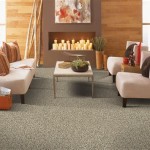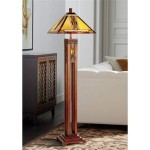Shower Floor Mat Non-Slip: Ensuring Safety and Comfort in the Bathroom
The bathroom, a space dedicated to hygiene and relaxation, can also be a significant source of household accidents. Slips and falls in the shower are unfortunately common, leading to injuries ranging from minor bruises to serious fractures. A key element in mitigating this risk is the implementation of a non-slip shower floor mat. These mats are designed to provide enhanced grip and stability underfoot, thereby reducing the likelihood of accidents and promoting a safer bathing experience for individuals of all ages and abilities.
The selection of a suitable non-slip shower floor mat involves careful consideration of various factors, including the material, size, design, and adherence mechanism. The market offers a diverse array of options, each with its own set of advantages and disadvantages. Understanding these characteristics is crucial in making an informed decision that best aligns with individual needs and bathroom specifications. Emphasis should be placed on selecting a mat that not only effectively prevents slippage but also complements the overall aesthetic of the bathroom.
Material Composition and its Impact on Slip Resistance
The material used in the construction of a shower floor mat plays a critical role in determining its slip-resistant properties. Several materials are commonly employed, each exhibiting varying degrees of friction and water resistance. Understanding the characteristics of these materials is essential for choosing a mat that provides optimal safety.
Rubber: Rubber is a popular choice due to its inherent grip and flexibility. It provides a naturally high coefficient of friction, making it effective in preventing slippage even when wet. Rubber mats are often constructed with textured surfaces or raised patterns to further enhance traction. However, some individuals may be sensitive to the odor associated with rubber, and certain types of rubber can degrade over time with prolonged exposure to water and cleaning agents.
PVC (Polyvinyl Chloride): PVC is a synthetic plastic polymer known for its durability and water resistance. PVC mats are generally less expensive than rubber mats, making them an attractive option for budget-conscious consumers. However, the slip resistance of PVC can vary depending on the specific formulation and surface texture. Some PVC mats may become slippery when wet, particularly if they lack adequate texturing or drainage holes.
TPR (Thermoplastic Rubber): TPR combines the properties of rubber and plastic, offering a balance of flexibility, durability, and slip resistance. TPR mats are often considered a more environmentally friendly alternative to PVC mats, as they are recyclable. They typically offer good grip, are water-resistant, and can be molded into a variety of designs and textures to further enhance traction.
Silicone: Silicone is a synthetic polymer known for its heat resistance, flexibility, and non-porous nature. Silicone mats are often preferred for their hypoallergenic properties and resistance to mold and mildew growth. They typically offer good slip resistance and are easy to clean. However, silicone mats may be more expensive than mats made from other materials.
The choice of material should be guided by a careful assessment of the specific shower environment, including factors such as water temperature, cleaning agents used, and the presence of any sensitivities or allergies among household members. The material’s ability to maintain its slip-resistant properties over time, even with repeated use and exposure to water, should also be considered.
Adhesion Mechanisms: Suction Cups vs. Textured Surfaces
The effectiveness of a non-slip shower floor mat hinges not only on the material but also on the mechanism by which it adheres to the shower floor. Two primary adhesion methods are commonly employed: suction cups and textured surfaces. Each approach offers distinct advantages and disadvantages, and the suitability of a particular method will depend on the type of shower floor surface.
Suction Cups: Suction cups are small, concave rubber or plastic discs that create a vacuum seal when pressed against a smooth, non-porous surface. Shower mats equipped with suction cups are designed to adhere firmly to the shower floor, preventing them from sliding or shifting during use. The effectiveness of suction cups depends on several factors, including the cleanliness of the shower floor, the condition of the suction cups themselves, and the type of surface. Suction cups typically perform best on smooth, glazed tile or acrylic shower floors. They may not adhere as effectively to textured or porous surfaces, such as natural stone or unglazed tile.
Furthermore, it is crucial to regularly inspect the suction cups for signs of damage or deterioration. Cracked or worn suction cups will lose their grip and compromise the safety of the mat. The shower floor should also be thoroughly cleaned before each use to remove any soap scum or debris that could interfere with the suction cup seal.
Textured Surfaces: Shower mats with textured surfaces rely on friction to prevent slippage. These mats typically feature raised patterns, ridges, or grooves that increase the contact area between the mat and the shower floor. The textured surface provides enhanced grip even when wet, reducing the risk of falls. Textured mats are generally more versatile than suction cup mats, as they can be used on a wider range of shower floor surfaces, including textured tile and acrylic. However, the effectiveness of a textured mat depends on the aggressiveness of the texturing and the type of material used.
Some textured mats may be less effective at preventing slippage if they become coated with soap scum or other residues. Regular cleaning is essential to maintain the grip of textured mats. In addition, some individuals may find the texture of certain mats to be uncomfortable or irritating to their feet.
The choice between suction cups and textured surfaces depends on the specific characteristics of the shower floor and the preferences of the user. For smooth, non-porous surfaces, suction cups can provide a secure and reliable grip. For textured or porous surfaces, a textured mat may be a more suitable option. In some cases, a combination of both suction cups and textured surfaces may be used to provide maximum slip resistance.
Design Considerations: Size, Shape, and Drainage
Beyond material and adhesion mechanisms, the design of a shower floor mat plays a crucial role in its functionality and safety. Factors such as size, shape, and drainage capabilities directly impact the mat's ability to prevent slippage and maintain a hygienic bathing environment.
Size and Shape: The size and shape of the shower floor mat should be carefully considered to ensure adequate coverage of the shower floor. The mat should be large enough to provide ample space for standing and moving around, but not so large that it interferes with the shower door or drain. Common shapes for shower mats include rectangular, square, and circular. The optimal shape will depend on the dimensions and configuration of the shower stall or tub. It is generally advisable to choose a mat that covers the majority of the shower floor area to maximize safety and prevent accidental slips on exposed surfaces.
Drainage: Proper drainage is essential to prevent water from pooling on the surface of the shower floor mat. Standing water can create a slippery surface and increase the risk of falls. Shower mats should be designed with drainage holes or channels that allow water to flow freely underneath the mat and into the drain. The size and number of drainage holes will depend on the size of the mat and the volume of water typically used during showering. Regularly check the drainage holes to ensure they are clear of debris and not blocked by soap scum or hair.
Anti-Microbial Properties: Given the damp environment of a shower, the potential for mold and mildew growth on shower mats is a significant concern. Selecting a mat with inherent anti-microbial properties or one that is treated with an anti-microbial agent is highly desirable. These treatments can help inhibit the growth of bacteria, mold, and mildew, preventing unpleasant odors and extending the lifespan of the mat. Furthermore, regular cleaning and disinfection of the shower mat are essential to maintain a hygienic bathing environment.
Aesthetic Considerations: While safety is paramount when selecting a non-slip shower floor mat, aesthetic considerations should not be overlooked. The mat should complement the overall design and color scheme of the bathroom. Shower mats are available in a wide variety of colors, patterns, and styles to suit different tastes and preferences. Choosing a mat that is visually appealing can enhance the overall bathing experience and contribute to a more comfortable and inviting bathroom environment.
In conclusion, a non-slip shower floor mat is an indispensable safety accessory for any bathroom. By carefully considering the material, adhesion mechanism, and design features, individuals can select a mat that effectively prevents slippage, promotes a safer bathing experience, and complements the overall aesthetic of their bathroom. Regular maintenance and cleaning are essential to ensure the continued effectiveness and longevity of the shower floor mat.

Non Slip Bathroom Floor Mat Beige

Non Slip Shower Mat With Foot Scrubber Grey
Non Slip Bathroom Mat Ready Stock 30cm Toilet Shower Kitchen Floor Anti 浴室防滑垫

Non Slip Bath Mat With Antislip Suction Cups And Drain Holes Waterproof Rug Shower Strong Pvc Rubber Massage Floor Bathroom

Non Slip Bathroom Floor Mat Beige

Odorless Non Slip Bathroom Floor Mat Shower Bath With Suction Cup Anti

Bathroom Safety Pvc Bath Mat Hollow Out Massage Non Slip Waterproof Anti Bacterial Gripping Mildew Resistant Eco Friendly Extra Long Supplies Shower
Bathroom Anti Slip Mat Kitchen Toilet Floor

Bathroom Floor Mat Shower Room Bath Non Slip Absorbent And Soft Rug Washable Chenille For Bathtub Toilet Entryway Microfiber

Non Slip Mat For Bathroom Floor Singapore Anti Safe








